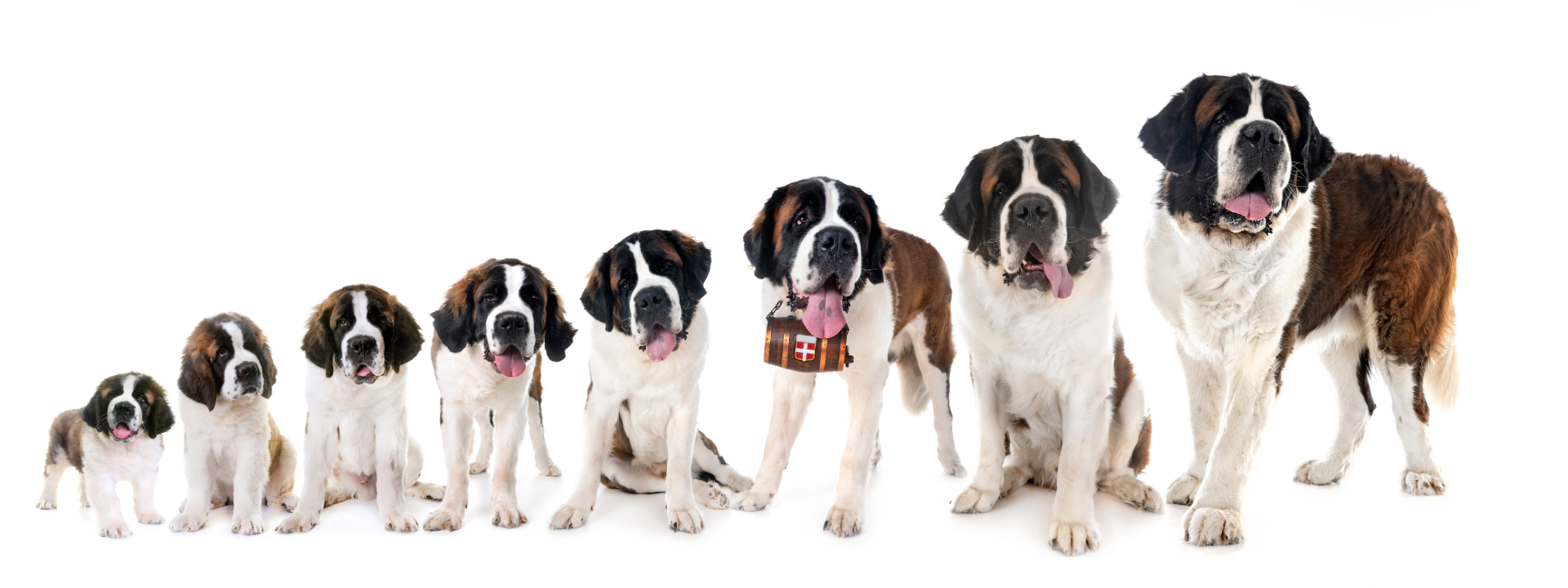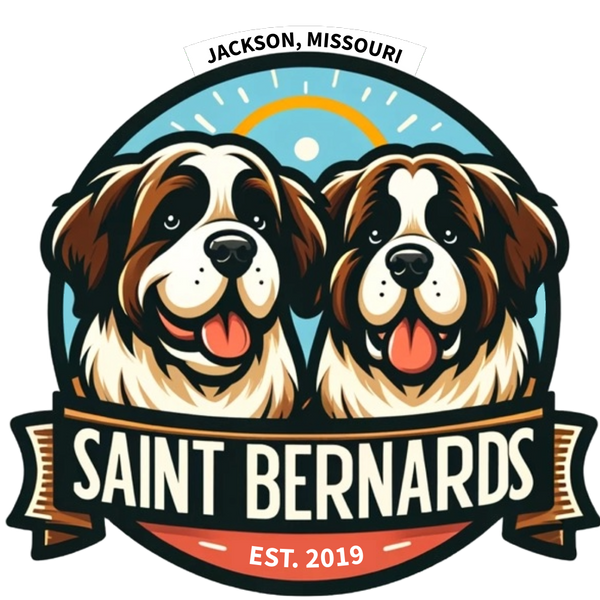
About Saint Bernards
The Saint Bernard is universally admired for its feats of rescue in the Swiss Alps. For more than 200 years, its courage and skill have been the stuff of legends!
Pet Facts
-Placid, affectionate, loyal nature
-Require frequent brushing for a good coat
-Regular, moderate exercise is recommended
-Well suited to urban living if given plenty of space and exercise
-Good watchdog
Height and Weight
Male: at least 27 inches high at the shoulder, averaging about 172 lbs
Female: at least 25 inches high at the shoulder, averaging about 160 lbs
History
The Saint Bernard is thought to have descended from the Molossi, the original mastiff stock introduced to the Alps by the Romans about 2000 years ago. The breed is named after Bernard de Menthon, the founder of a hospice built in a remote alpine pass in Switzerland nearly 1000 years ago to shelter mountain travelers. Bernardine monks developed the dog for guard, guide and draft work. It is not know when the dog started to be used for rescue work, although it is likely to have been during the seventeenth century. The breed has been credited for saving the lives of over 2500 people - Barry, a Saint Bernard born in 1800, rescued 40 people in his 12 years of work.
Description
This is an imposing dog: tall, broad, and strong. It has a muscular neck, a deep chest, and a broad, powerful tail that curves slightly at the tip. The feet are large with well arched toes, making the Saint Bernard sure-footed in snow and on ice. It has a highly developed sense of smell and also seems to have a sixth sense about impending danger.
Smooth and rough coated varieties are available. Both coat types are very dense and come in white, with tan, mahogany, red, brindle and black markings in various combinations. The rough coat is a modern development from crossing the dog with Newfoundland stock. The hair is slightly longer and there is feathering on the legs. However, since the hair ices up in the extreme weather, the coat is less suited to the dog's original environment. The short, square muzzle, face and ears are usually shaded with black. The dog's expression is benevolent.
Temperament
Dignified and reliable, the Saint Bernard is generally good with children. It is highly intelligent and easy to train although training should begin early, while the dog is still a manageable size, to quell any dominant tendencies. An unruly dog of this size presents a problem for even a strong adult if it is to be exercised in public areas on a leash, so take control from the outset.
The Saint Bernard does not bark a lot but makes a good watchdog, its size alone an effective deterrent.
Grooming
Both types of coat need thorough combing and brushing with a firm bristle brush at least three times a week. During spring and fall, when there is considerable shedding, it will need daily brushing. Bathe only when necessary with mild soap - shampoo may strip the coat of its natural oils.
Since a lot of dogs of this breed drool, optional extra care is needed to keep the jowls and chest clean. Contrary to popular belief the drooling is 100% manageable. They typically drool only when they are eating or drinking, are hot, or get excited when meeting someone new. Some, in fact do not drool at all!
The eyes, which may be inclined to water, need special attention to keep them clean and free of irritants. Check the ears regularly and keep the the nails trimmed.
Exercise and Feeding
A long daily walk will keep this dog in good condition. Like all large breeds, it grows rapidly and its diet requires careful attention. Do not allow a puppy too much activity until the bones are well formed and strong. Short walks and brief play sessions are best until the dog is about two years old.
This breed is highly susceptible to bloat, a very dangerous and deadly condition where the stomach "flips". If this happens an immediate trip to the vet or emergency room is necessary. To best help prevent bloat, two or three small meals a day from the floor level is recommended. They do require more food than most breeds - around a 40 lb bag of dog food every 3 weeks.
Health Problems
Though we use selective breeding to specifically help prevent diseases they are prone to, it is worth mentioning what Saint Bernards carry high risk of, so action can be taken early to help prevent them! This giant dog is particularly prone to hip dysplasia (mitigated through exercise) and heart disease (mitigated through healthy and controlled diet). It may also suffer from epilepsy, skin problems, and an eye condition called ectropion (mitigated through a very minimal invasive surgery), that causes irritation and weeping because the eyelids won't close completely.
Contact Us
-
Office Hours
Tuesday: 12 PM - 6 PM
Thursday: 12 PM - 6 PM
Other Days and Times:
Available By Appointment
-
-
